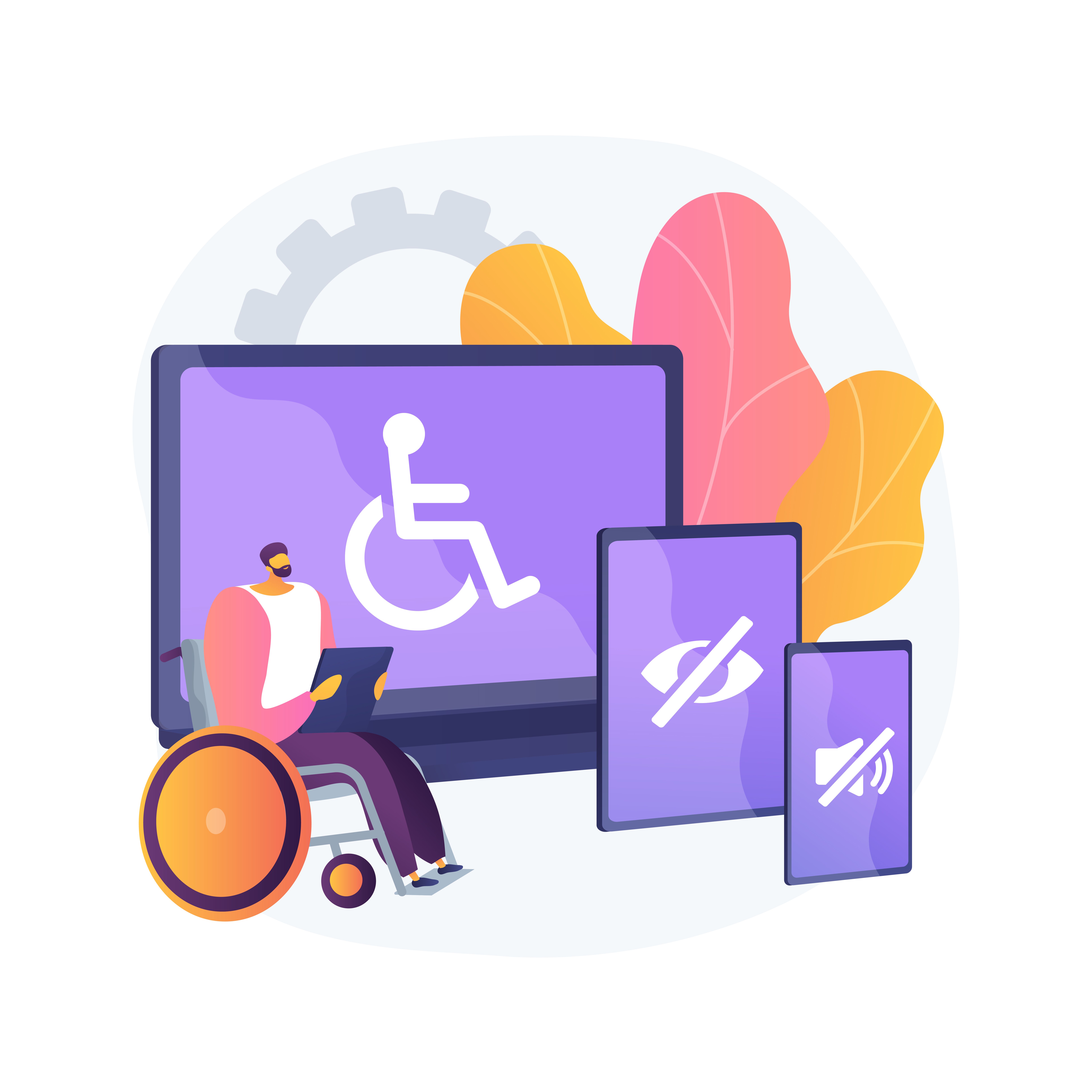In the current digital age, it's crucial to make sure your website is available and accessible to all users. This isn't just a moral obligation, but also a smart business strategy that can increase website traffic, improve user experience and stimulate conversions.
Let's delve into the process of integrating inclusive design into your website layout with 5 crucial steps.

Step 1 - Apply POUR Principles for Inclusive Design
The Web Content Accessibility Guidelines (WCAG) underscore the importance of POUR - Perceivable, Operable, Understandable, and Robust.
- Perceivable: Ensure all users can perceive the content. Use captions for videos, alt text for images, and high contrast colours.
- Operable: Make sure all functionalities are accessible to everyone, including keyboard navigation for interactive elements like dropdown menus and sliders.
- Understandable: Keep content clear and easy to comprehend. Avoid jargon and provide concise, clear error messages.
- Robust: Content should be compatible with various user agents, including assistive tools like screen readers. Stick to standard HTML tags for this.
Importance of WCAG in Web Design

Step 2 - Focus on Detailed Alt-text for Visual Content
Ensuring accessibility isn't just about adding any text to the alt attribute. It involves providing precise and meaningful descriptions. For example, rather than labeling an image as "drawing," detail it as "a child's colourful drawing of a family standing in front of their house." This immersive description significantly improves the experience for individuals who use screen readers.
Additionally, remember that alt text serves a dual purpose. While it certainly aids visually impaired users, it also boosts your SEO efforts as search engines use this text to understand the content of the image. So, investing time in crafting meaningful alt text is not only an inclusive practice but also a smart SEO strategy.
Image Alt Text: A Hidden Gem for Website Optimisation

Step 3 - Enhance Readability with Optimal Text and Colour Contrast
When it comes to fonts, opt for sans-serif variants such as Arial, Verdana, or Calibri, which are typically more legible. Also, make sure to provide sufficient spacing between lines and paragraphs to enhance readability.
Colours are not just about visual appeal; they significantly impact user experience. The selection of colours should be done thoughtfully, ensuring that they provide good contrast for easy readability. Tools like the Colour Contrast Analyzer can assist you in creating a colour scheme that is visually friendly for all users, including those who are colour blind.
Be mindful of colour symbolism and cultural differences when choosing colours. A colour that is considered positive or neutral in one culture may have a different connotation in another. Similarly, colour blindness affects people differently, so it's important to use colours that are universally easy to distinguish.

Step 4 - Evaluate Navigation Through Keyboard-Only Testing
Take a tour of your website using only your keyboard. Ask yourself these questions:
- Can you interact with dropdown menus?
- Is it possible to pause slideshows?
- Are you able to complete and submit forms?
Encountering any difficulties during this process should serve as an indication that other users may likely experience the same issues. Conducting this test periodically ensures that your website remains accessible and user-friendly for all, including those who rely solely on their keyboards for navigation.
Keyboard-only test is particularly crucial for individuals with motor disabilities who may not be able to use a mouse or a touch screen. By ensuring your website is keyboard-friendly, you are making it more inclusive and accessible. This practice can also enhance the overall user experience as it provides an alternative navigation method which some users might find more efficient and convenient.

Step 5 - Utilise Automated Accessibility Testing Tools
While human attention to detail is critical, it's not infallible and can occasionally overlook certain aspects. This is where automated testing tools such as AXE and WAVE come into play. These tools perform extensive scans of your website, pinpointing potential areas that might need improvement.
However, while these tools are extremely useful, they should not be used as a standalone solution. Always supplement automated tests with manual reviews to ensure a well-rounded, comprehensive approach to website accessibility. By combining both methods, you can ensure that your website is not only compliant with accessibility standards but also provides an excellent user experience for all visitors.

Conclusion
The journey to website accessibility is ongoing. By integrating these steps into your design and maintenance processes, you lay a strong foundation for inclusivity. Remember: when you prioritise accessibility, you're not only meeting legal and ethical obligations but also enhancing user experience for all, leading to better engagement, lower bounce rates, and improved brand perception.
Inclusive Design: The Role of Accessibility in UX/UI
Let Cogify Guide You
Elevate your online footprint with custom UX/UI solutions from Cogify. We emphasize accessibility at every turn. Connect with us today, and let's design digital interactions that resonate with everyone.





